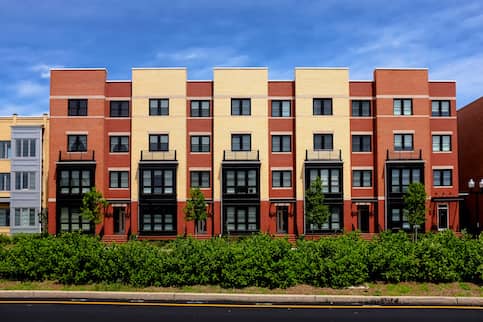Condo HOA and Community Occasions: Building Stronger Connections
Condo HOA and Community Occasions: Building Stronger Connections
Blog Article
How Condo HOA Regulates Shared Areas and Enhances Neighborhood Harmony
The administration of shared areas within a condominium association plays an essential role in cultivating area communication and keeping home values. With the establishment of thorough standards, the Apartment HOA not just manages the usage of public features yet additionally advertises a culture of respect and responsibility amongst locals.
Duty of the HOA
The home owners association (HOA) functions as the governing body for condo neighborhoods, playing an essential role in maintaining the home and advertising a cohesive living setting. It is accountable for establishing and enforcing neighborhood policies and policies, which are developed to maintain the aesthetic worth and functionality of the common area. This governance ensures that all locals stick to a standardized set of assumptions, cultivating a feeling of unity amongst diverse property owners.
Furthermore, the HOA handles the economic aspects of the area, including budgeting, gathering dues, and keeping typical areas. This monetary oversight is essential in ensuring that necessary maintenance and improvements are executed quickly, enhancing residential or commercial property worths with time. The HOA additionally works as an intermediary between residents and exterior entities, such as city government and service carriers, dealing with public worries effectively.
In Addition, the HOA commonly organizes neighborhood events and programs, urging neighborly communications and developing relationships among citizens. By helping with open communication and addressing grievances, the HOA adds to a harmonious living setting. Therefore, its complex duty is important in making sure the smooth procedure and total fulfillment within condominium areas.
Regulations for Shared Areas
Efficient administration in condo areas necessitates clear regulations for common rooms, which are vital for preserving order and advertising a feeling of neighborhood among citizens. These regulations serve as guidelines that ensure everybody can take pleasure in usual locations, such as swimming pools, gardens, and leisure centers, without conflict.

In addition, cleanliness and maintenance requirements are crucial, frequently stipulating that homeowners need to clean up after themselves and report any damages to the house owners' organization. By plainly communicating these expectations, the HOA can reduce misconceptions and encourage regard amongst locals.
Ultimately, well-defined rules for shared rooms add to the total lifestyle in a condominium community, enabling residents to coexist quietly while enjoying the services that enhance their living experience. condo hoa.
Importance of Neighborhood Standards
Area standards play a significant role in cultivating a natural and considerate setting within condominium organizations. These standards establish clear expectations for residents, promoting a sense of responsibility and shared duty. By defining appropriate habits and techniques, area standards help Extra resources avoid misconceptions and conflicts amongst citizens.
Furthermore, these standards serve as a structure for preserving the functional and aesthetic stability of shared areas. They make certain that all citizens comply with requirements regarding residential or commercial property maintenance, noise levels, and usage of public facilities. This uniformity not just enhances the visual charm of the community yet likewise contributes to total residential or commercial property worths, profiting all home owners.

Conflict Resolution Strategies
Navigating disputes within a condominium organization requires a structured strategy to guarantee reliable and fair resolution. Reliable dispute resolution strategies often begin with open interaction, motivating locals to voice problems in a respectful fashion. Establishing a designated channel for complaints, such as a recommendation box or an online forum, can promote this procedure.
Arbitration is an additional important technique, in which a neutral third event assists disputing residents get to an equally acceptable option. This method cultivates collaboration and understanding, minimizing hostility - condo hoa. The HOA board must also develop clear treatments for addressing grievances, making sure all events recognize the steps included
Routine dispute resolution training for board participants can boost their ability to deal with conflicts efficiently. Making use of a well-defined framework, such as the "Interest-Based Relational Method," assists concentrate conversations on passions as opposed to settings, promoting a solutions-oriented way of thinking.
Advantages of Community Consistency
Promoting area harmony within a condominium association brings countless benefits that enhance the total living experience for residents. A harmonious community urges partnership and teamwork amongst next-door neighbors, leading to a much more like-minded ambience. Website When locals really feel connected get redirected here and respected, they are most likely to take part in public tasks and take part in decision-making procedures, causing a more powerful feeling of belonging.
Furthermore, area consistency significantly decreases disputes and misunderstandings, which can or else disrupt life. A serene setting reduces tension and promotes psychological well-being, enabling homeowners to enjoy their homes fully. Furthermore, unified relationships frequently translate into increased home values, as prospective buyers are attracted to neighborhoods characterized by security and participation.

Final Thought
Via the establishment of clear guidelines and area standards, locals are motivated to keep a respectful and liable atmosphere. Inevitably, the initiatives of the HOA contribute to a natural area, advertising both property values and total resident complete satisfaction.
Furthermore, the HOA usually organizes area events and programs, urging neighborly communications and constructing connections among homeowners. By marking appropriate behaviors and methods, area standards help prevent misunderstandings and conflicts amongst residents.
In addition, neighborhood standards facilitate reliable communication amongst residents and the Homeowners Association (HOA) Through the establishment of clear rules and area standards, homeowners are motivated to keep a answerable and considerate environment. Ultimately, the initiatives of the HOA contribute to a cohesive neighborhood, promoting both home values and overall resident complete satisfaction.
Report this page